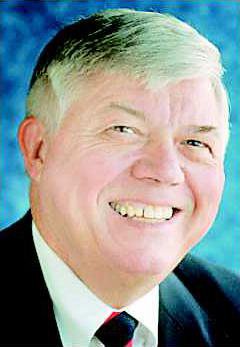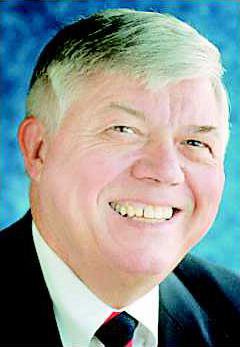Georgia is the fourth-largest state, with nearly 10 million people and growing. As concentrated as part of the state is around Atlanta and as spread out as the rest of the state is, it is little wonder that there is a long list of transportation needs that grows larger as the state grows and the projects become more expensive as inflation increases the costs year after year.
In the 4th District, two counties with pressing transportation needs are Effingham and Bulloch counties. Effingham, as a rapidly-growing county of over 50,000, has major transportation problems with commuting between Effingham and Chatham counties on a congested Highway 21, a four-lane GRIP highway that has a choke point at the intersection of 21 and I-95. A secondary route in and out of the county is badly needed and a route is well along in the planning stage. But it is an expensive project that may languish unless new sources of funding, local and state funding are found.
Bulloch County has Highway 67 connecting to I-16 (which is the main corridor for Statesboro and Georgia Southern University traffic) going to and from Savannah. This highway is a two-lane highway in the plans to four lane, but funding is the issue.
In other 4th District counties, a number of new roads need to be paved, but those remaining counties are all collecting and spending the additional 1 cent transportation special purpose local option sales tax funds that are in place for 10 years. Those counties will come close to meeting their transportation needs.
The Georgia Department of Transportation has a long list of expensive state projects including the Northwest Corridor ($598 million), I-75 South express lanes ($176 million), I-285/SR400 ($950 million) and the Jimmy DeLoach Connector ($73 million) now under construction to the port in Savannah. The GDOT’s major strategic plans, which are all aimed at the traffic in and around Atlanta and out of state from there, total in excess of $12 billion. Lists exist that approach $100 billion.
What are the outcomes from no action on funding?
Some may argue that $1 billion-plus in state transportation funds, plus federal and local funds, are sufficient to meet the state’s highest priorities. There is also the argument that voters seemed to display in voting down the TSPLOST referendum two years ago, and that is a distrust of government spending new funds where they say they will, or project politics or that DOT cannot produce projects on-time, on-budget as promised.
There is strong evidence that in a state where transportation plays such a central role in commerce, logistics and commuting, along with tourism, that the status quo or simply funding major projects one at a time over the years, almost certainly inhibits the state’s prosperity. Yes, there are highway contractors pushing for new funding with an eye to getting construction dollars back where they used to be.
But if you listen to planners, economic developers and local leaders, not just in the Atlanta area but all over the state, the future of Georgia is tied inextricably to maintaining and expanding existing corridors and traffic movers and creating new ones where growth demands. Commuting time in the metro Atlanta area has become a nationally-known statistic.
Lacking new funding, the leadership of the state will direct a high percentage of those dollars to projects of highest significance, which will probably focus on the Atlanta area and could leave the rest of the state behind.
So what are some other options?
1. Do nothing — see above paragraph.
2. Keep the 1 percent sales tax of the 4 percent collected on motor fuel that is presently being transferred to the general treasury and used in the state budget. Of course, that is a $180 million cut to other parts of the budget. The fuel tax, then 3 percent, was created in 1979 replacing 3 percent of the existing sales tax which allowed the remaining 1 percent of the new 4 percent tax to flow to the general budget through Appropriations. Of course, any change could be phased in over some years.
3. “Debt held” accounts for 24 percent of the total DOT state appropriations. That amounts to $239.5 million yearly in debt service on state debt issued to build roads. If the state added this to the interest the state already pays, thereby adding this debt to the state’s other general obligations, this would free up that $239 million to be spent on roads and bridges. The additional debt could be managed by possibly delaying the funding of other projects for one or more years and managing the debt as part of the state’s overall bond management. Again, a change like this could be phased in.
4. Implement some “new” local option sales tax, “TSPLOST II,” to be spent solely on local or regional projects or regional projects as local governments see fit per local referendums. Something like this would allow fast-growing areas to jump-start the development of highways and/or other transportation options. “Spoiler alert” — any new sales tax is seen as an inhibitor to tax reform, reducing the income tax and replacing with additional sales taxes.
5. Allow a statewide referendum on additional spending for state transportation priorities by a statewide sales tax. Hard to figure how rural areas would fare in this scenario, though. I’m “agin” it, at first blush.
6. “Monkey” with the existing motor fuel taxes, changing to all sales tax or some new idea like taxing by miles traveled, but increasing the total tax. It is hard, though, to imagine Georgia lawmakers breaking the mold too drastically.
I may be reached at
234 State Capitol, Atlanta, GA 30334
(404) 656-5038 (phone)
(404) 657-7092 (fax)
E-mail at Jack.Hill@senate.ga.gov
Or call toll-free at
1-800-367-3334 day or night
Reidsville office: (912) 557-3811





